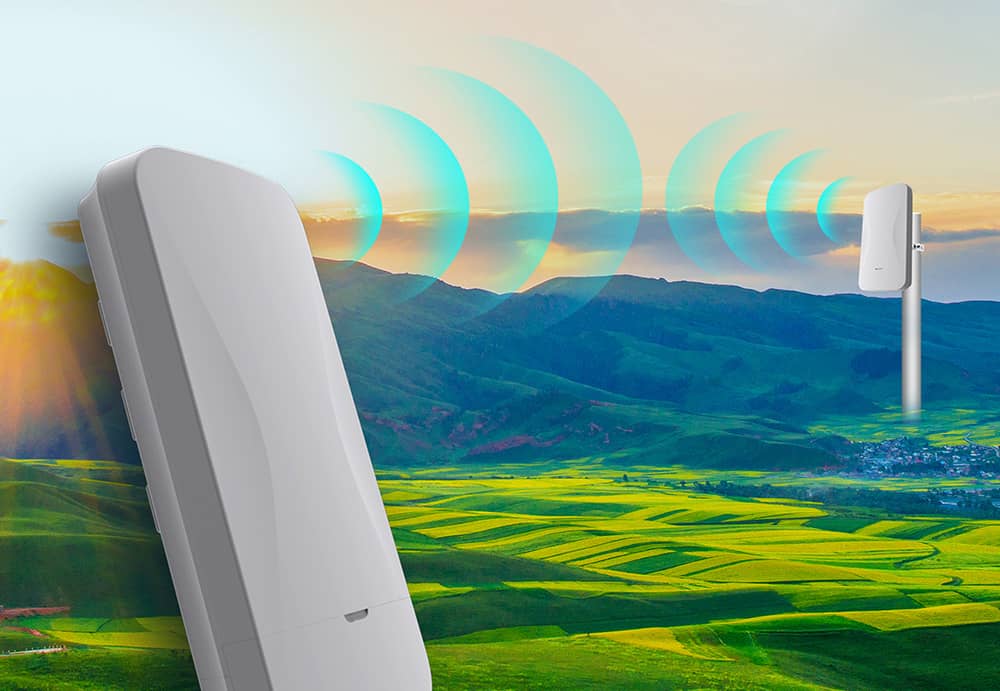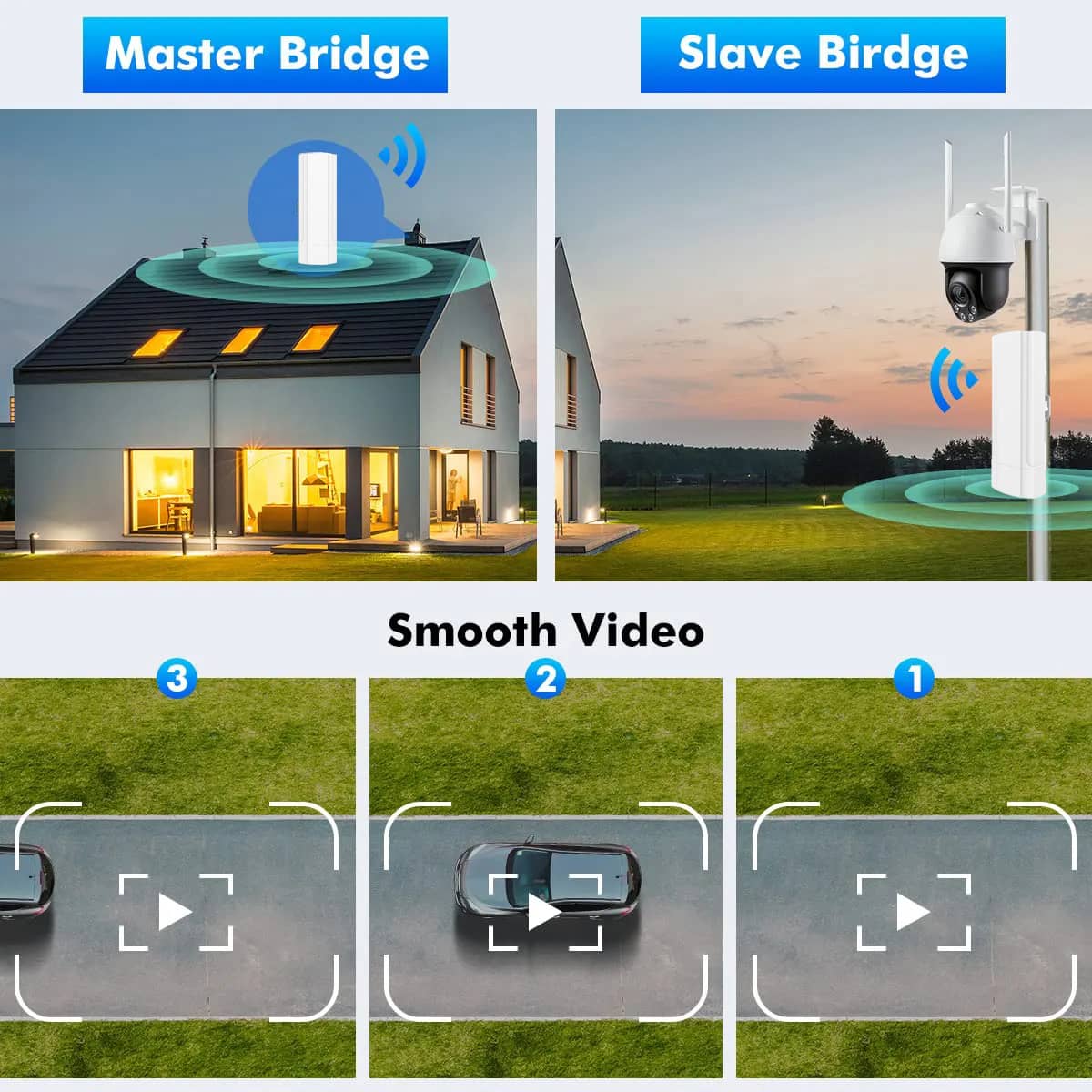Please submit your message online and we will contact you as soon as possible!
- Experience security and speed, without compromise.

2025-01-09
As businesses and homes increasingly rely on reliable internet connections, ensuring seamless network access across large properties or multi-building setups can be a challenge. This is where a point-to-point wireless bridge comes in. Unlike traditional routers or Wi-Fi extenders, point-to-point bridges offer a stable, long-range solution for connecting distant locations. In this guide, we’ll explain what a point-to-point wireless bridge is, how it works, and why it’s the best choice for long-range connectivity.

A point-to-point wireless bridge is a specialized networking device designed to connect two fixed locations over a wireless link. It uses radio waves to transmit data between two points, effectively extending your network coverage over long distances. Unlike a traditional wireless bridge, which may extend the network to multiple devices or areas, a point-to-point bridge focuses on creating a direct, reliable link between two distant points.
Key Features of a Point-to-Point Wireless Bridge:
● Long-Range Connectivity: Point-to-point wireless bridges can transmit data over distances of up to 5 miles, making them perfect for large properties, campuses, or remote locations.
● High-Speed Data Transmission: These devices support high bandwidth, ensuring fast and stable internet connections, even at great distances.
● Minimal Interference: Point-to-point bridges often operate on specific frequencies, ensuring a clean signal and reducing the chances of interference from other networks.

A point-to-point wireless bridge works by connecting two devices (often called "bridged points") using a dedicated wireless signal. These devices are typically placed in a direct line of sight of each other, and the bridge transmits data between the two points using radio waves.
For example, imagine you have a main office building and a remote warehouse. Instead of running cables across the property, a point-to-point wireless bridge can be installed on both buildings to create a wireless link, allowing the warehouse to access the same network as the office building. This setup is ideal for businesses or homeowners with large properties or multiple buildings that require seamless connectivity.
A point-to-point wireless bridge is best suited for situations where you need to create a direct, stable link between two remote locations. Here are some common use cases:
Connecting Multiple Buildings: If you have multiple buildings spread over a large area, a point-to-point wireless bridge can connect them, enabling devices in each building to access the same network.
Connecting a Remote Property: For rural areas, farms, or properties that are far from the main network source, a point-to-point wireless bridge can extend the internet connection to remote buildings or outdoor areas.
Smart Device Connectivity: If you have smart devices like security cameras, outdoor security lights, or sensors in a far-off building, a point-to-point bridge ensures they remain connected to the main network.
Cost-Effective: Installing a point-to-point wireless bridge is much more affordable than running cables or setting up fiber-optic connections across large distances.
Ease of Setup: Setting up a point-to-point wireless bridge typically involves mounting the devices in line of sight and configuring them to establish a wireless link, which is easier than dealing with extensive wiring.
Reliability: Point-to-point wireless bridges offer a stable connection with minimal interruptions, even over long distances, making them ideal for applications that require a consistent internet connection.
Installing a point-to-point wireless bridge is relatively simple, even for non-technical users. Here are the general steps for setting one up:
Position the Devices: Place the two bridge devices on opposite sides of the area you want to cover. Ensure that they are within the recommended range and in direct line of sight of each other.
Mount the Devices: If necessary, mount the devices on poles, walls, or rooftops to ensure they are securely positioned.
Configure the Bridges: Use the device's web interface to configure both bridges, establishing a wireless connection between them.
Test the Connection: After setup, test the connection to ensure both devices are communicating effectively and the network is stable.
A point-to-point wireless bridge is an ideal solution for extending your network over long distances. Whether you need to connect multiple buildings, a remote office, or outdoor smart devices, a point-to-point bridge offers a reliable, cost-effective, and easy-to-install solution. Compared to traditional wireless bridges, point-to-point devices provide superior range, speed, and stability, making them perfect for large properties or businesses with specific connectivity needs.
By understanding how point-to-point wireless bridges work and selecting the right model for your property, you can ensure your network stays strong and reliable, no matter the distance.
Please submit your message online and we will contact you as soon as possible!